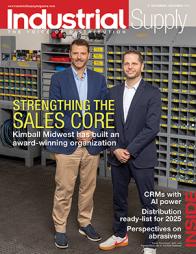Linking metrics and strategy
By Howard Coleman
Ideally, performance metrics should reflect a company’s strategic objectives. Yet, this may not always be the case, at least from what I’ve learned from my several years of observations. Executing a strategy is not as clean, neat or as easy as articulating that strategy.
Another observation: almost every day managers must answer questions about performance. “We’re missing our targets for XYZ. What should we focus on to improve?”
To solve performance problems, I typically suggest mapping the current processes, employing basic lean thinking principles and encouraging continuous improvement.
Once a solution is implemented, we use metrics to benchmark the results and compare to prior performance (what I frequently describe as baseline measures). Metrics explain how effective our efforts are in achieving organizational goals or the ROI of the effort. Companies, therefore, have to be careful about what metrics they employ. Does it provide the feedback as to how well a function is supporting the overall goals of the company?
As in many things, reality can differ from theory. Although my conclusions are not a result of scientific surveys, but rather employing 30-plus years of consulting activities and careful observations gleaned from those activities, I can report (I believe reliably) that operational metrics often do not seem to be connected to corporate strategy.
The Nature of the Disconnect
Are operational metrics aligned with corporate strategy? Can we tell a company’s strategy by the metrics it uses? Is there agreement on which metrics matter for a specific strategy? Strategy determines our competitive approach to the market, answering the question
“How are we going to compete?” Strategy determines the services we will provide, at what level those services will be delivered and maybe even what types of customers we will serve. It defines the policies that will be used and how resources will be allocated. Ultimately, it may also determine how a company makes critical decisions that differentiate itself from the rest of the market.
What priorities will be set for the key areas of products, services, the customer experience and costs? What makes strategies differ from one another is their primary emphases of keeping costs under control, providing greater customer service, or differentiating themselves from competitors in some way. This may require different operational methods to be able to execute the goals of the organization.
Four general strategies
I suggest four general strategies to compete in the marketplace: 1) operations cost leadership, 2) customer service, 3) innovation and 4) a combination of strategies.
1) Operations cost leadership (cost-to-serve):
Reducing/eliminating costs is absolutely critical. In a distribution environment, this drives such things as automation, employee training and real/effective process improvements. Metrics such as cost per order, cost per line shipped or total delivered cost might be appropriate as well as distribution costs as a percentage of sales, maybe even inventory turns, as it reflects the inventory decisions being made. Don’t scoff that this is old news. Many distributors do not understand/realize their true cost to serve.
2) Customer service:
The primary goal is to satisfy customer requirements, ideally in a way that customers are willing to pay a slightly higher price for a product or service because of the perceived value of the customer experience. Typical metrics may include order fill rates, on-time shipments, order accuracy, etc.
3) Innovation:
This attribute can set you apart. It’s the acquisition of and utilization of forward-looking technologies that can positively impact the cost leadership and customer service strategies and their metrics above. Among other things it may include superior e-commerce capability, business analytics, enhanced warehouse management, even robotics. There’s no time to waste on the innovation attribute. It’s really about now.
4) A combination of strategies:
Maybe I should call it (and you have heard this before) being all things to all people. In other words, trying to do everything well. It’s a strategy that has seen some decline in popularity because it is difficult to execute competing priorities. The potential is being stuck somewhere in the middle. Yet, this strategy appears not to have really changed much. It still remains the most frequently cited strategy despite the fact that it is difficult to perceive a competitive advantage or comply with any profitable niches to service.
For further thinking on the idea of four general strategies, I encourage you to read the book “Competitive Strategy,” by Michael Porter.
Where the Real World Meets Theory
As consultants, academics and other leading edge firms will tell you, operational functions should be aligned to support and achieve the objectives set forth by the strategy. At least in theory. One would expect that the metrics being used would be those that support or are influenced by that company’s particular overall corporate/business strategy. Companies, though, often do not put this theory into practice. Why do I often see no significant difference in metrics, for instance, in a company employing a cost strategy, versus one employing an innovation strategy? In other words, each company uses the same subset of measures. My observations inform me, therefore, that there are more similarities than differences and no core strategy.
So, what’s the ultimate impact here? Possibly, managers would be hard pressed to find where strategic choices have made operational differences. So, it appears to me, much work needs to be done.
Building the Metrics That Make Strategy Matter
In a subsequent article, I’ll outline some steps you can take to define the process that ensures you are using the appropriate metrics in your organization – aligned with strategy – that drive the desired results.
 Howard Coleman is principal of MCA Associates. Since 1986, the management consulting firm has worked with wholesale distribution and manufacturing companies that seek and are committed to operational excellence. Contact him at (203) 732-0603 or by email at hcoleman@mcaassociates.com.
Howard Coleman is principal of MCA Associates. Since 1986, the management consulting firm has worked with wholesale distribution and manufacturing companies that seek and are committed to operational excellence. Contact him at (203) 732-0603 or by email at hcoleman@mcaassociates.com.
This article originally appeared in the July/August 2018 issue of Industrial Supply magazine. Copyright 2018, Direct Business Media.












